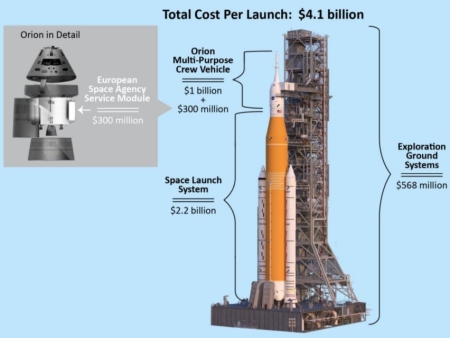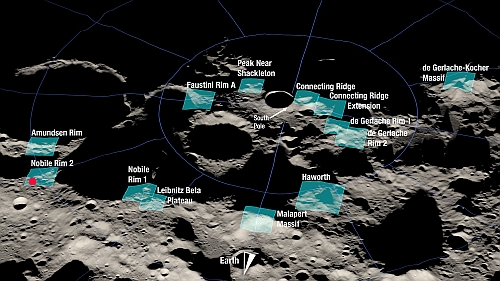NASA managers decide finally to roll SLS back to assembly building
NASA managers this morning finally gave up on launching their SLS rocket in an early October launch window and scheduled rolling back the rocket to the assembly building tonight.
NASA will roll the Artemis I Space Launch System rocket and Orion spacecraft back to the Vehicle Assembly Building on Monday, Sept. 26. First motion is targeted for 11 p.m. EDT.
Managers met Monday morning and made the decision based on the latest weather predictions associated with Hurricane Ian, after additional data gathered overnight did not show improving expected conditions for the Kennedy Space Center area. The decision allows time for employees to address the needs of their families and protect the integrated rocket and spacecraft system. The time of first motion also is based on the best predicted conditions for rollback to meet weather criteria for the move.
Based on this graph [pdf] provided by NASA earlier this year, the next launch window is from October 17 to October 31, followed by another from November 12 to November 27. It is unclear whether they can meet that first window, even if all engineers do is check and recharge the flight termination system batteries.
The question of the rocket’s two solid-fueled boosters however looms. Both are now one year past NASA’s use-by date, and it appears somewhat unknown what the risks are using them. Replacing them however will entail a significant delay, from three to six months.
As I said this weekend, NASA managers face no good choice, because of the impractical and inefficient design of this rocket.
NASA managers this morning finally gave up on launching their SLS rocket in an early October launch window and scheduled rolling back the rocket to the assembly building tonight.
NASA will roll the Artemis I Space Launch System rocket and Orion spacecraft back to the Vehicle Assembly Building on Monday, Sept. 26. First motion is targeted for 11 p.m. EDT.
Managers met Monday morning and made the decision based on the latest weather predictions associated with Hurricane Ian, after additional data gathered overnight did not show improving expected conditions for the Kennedy Space Center area. The decision allows time for employees to address the needs of their families and protect the integrated rocket and spacecraft system. The time of first motion also is based on the best predicted conditions for rollback to meet weather criteria for the move.
Based on this graph [pdf] provided by NASA earlier this year, the next launch window is from October 17 to October 31, followed by another from November 12 to November 27. It is unclear whether they can meet that first window, even if all engineers do is check and recharge the flight termination system batteries.
The question of the rocket’s two solid-fueled boosters however looms. Both are now one year past NASA’s use-by date, and it appears somewhat unknown what the risks are using them. Replacing them however will entail a significant delay, from three to six months.
As I said this weekend, NASA managers face no good choice, because of the impractical and inefficient design of this rocket.


